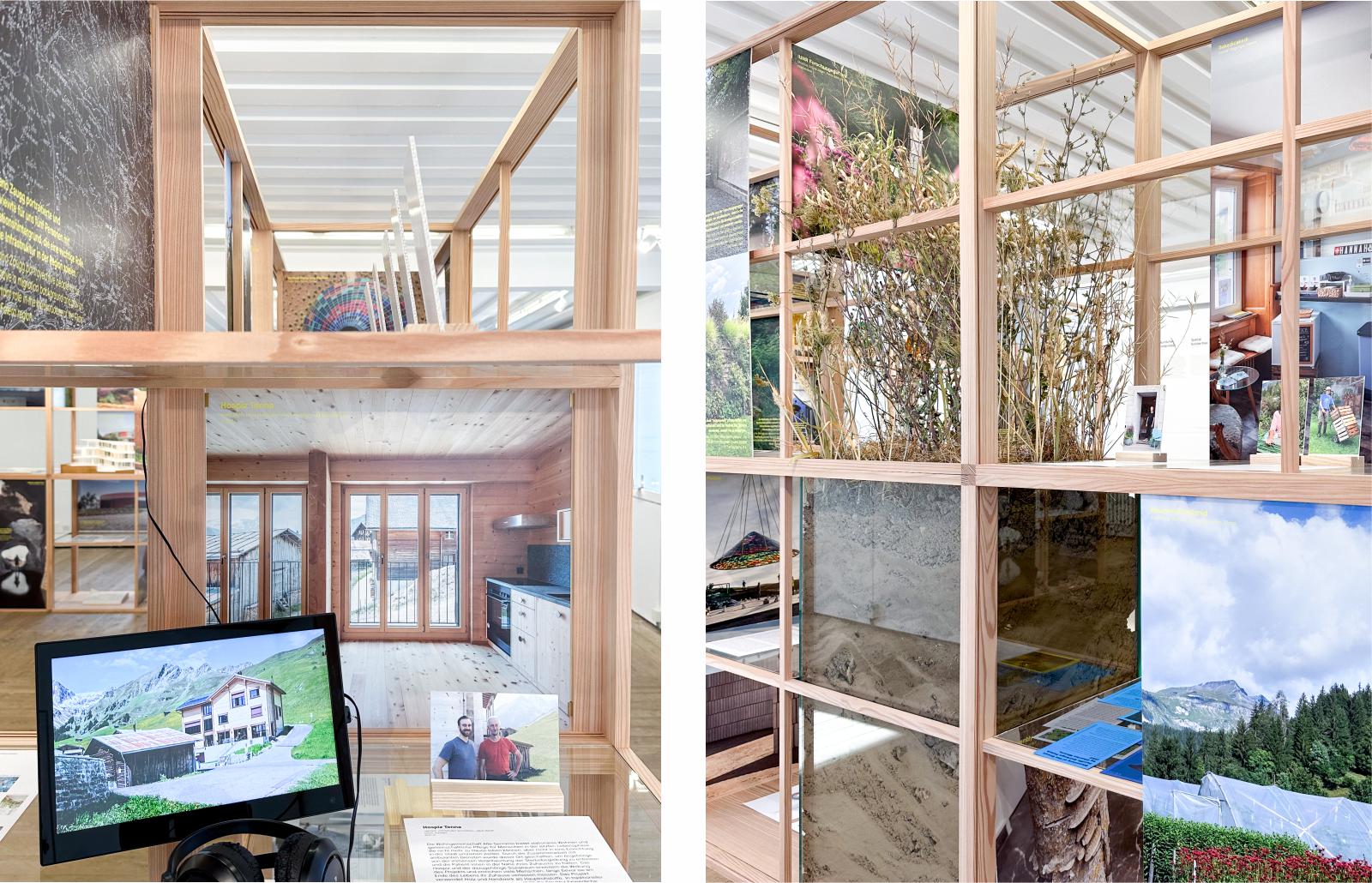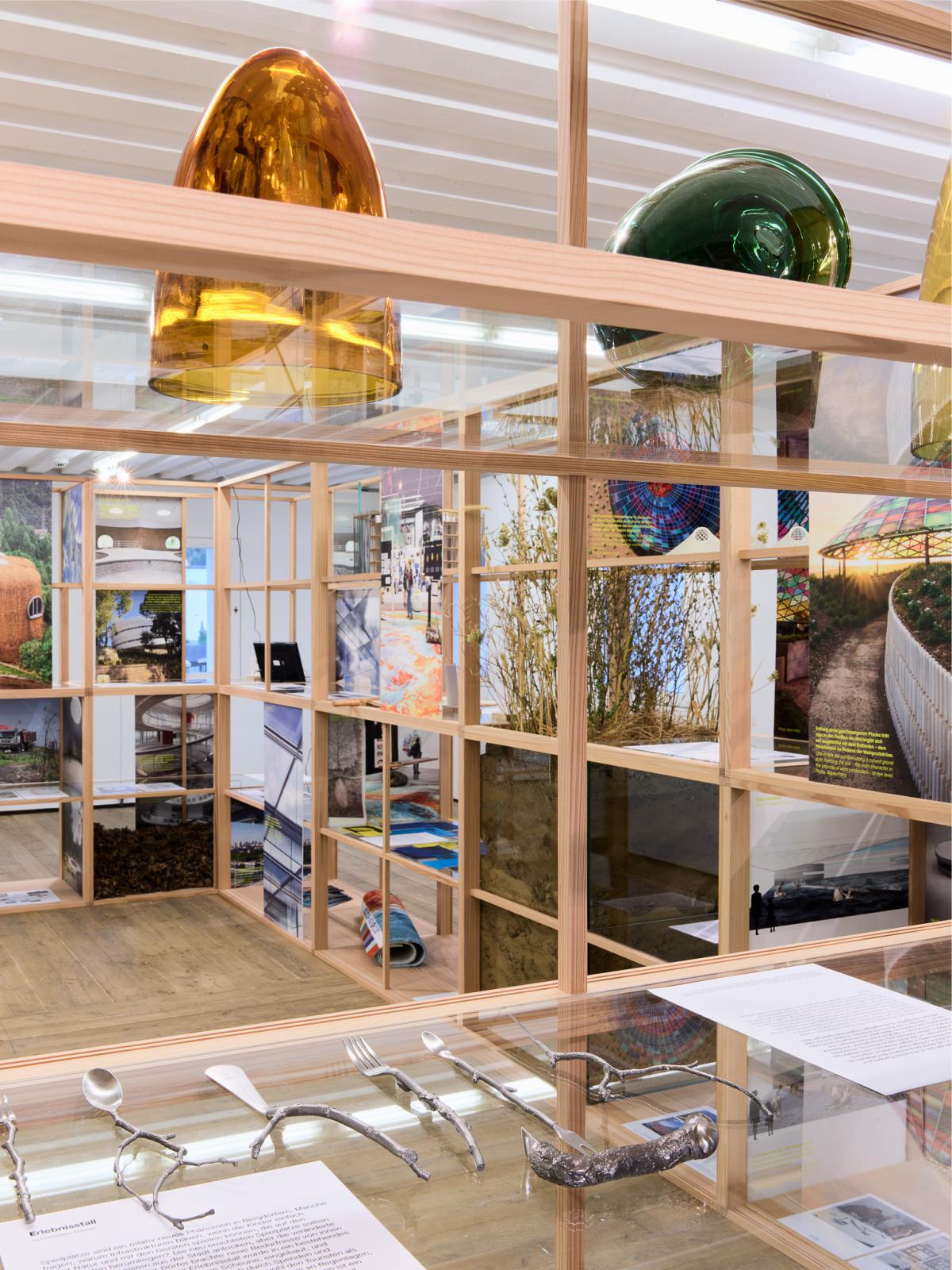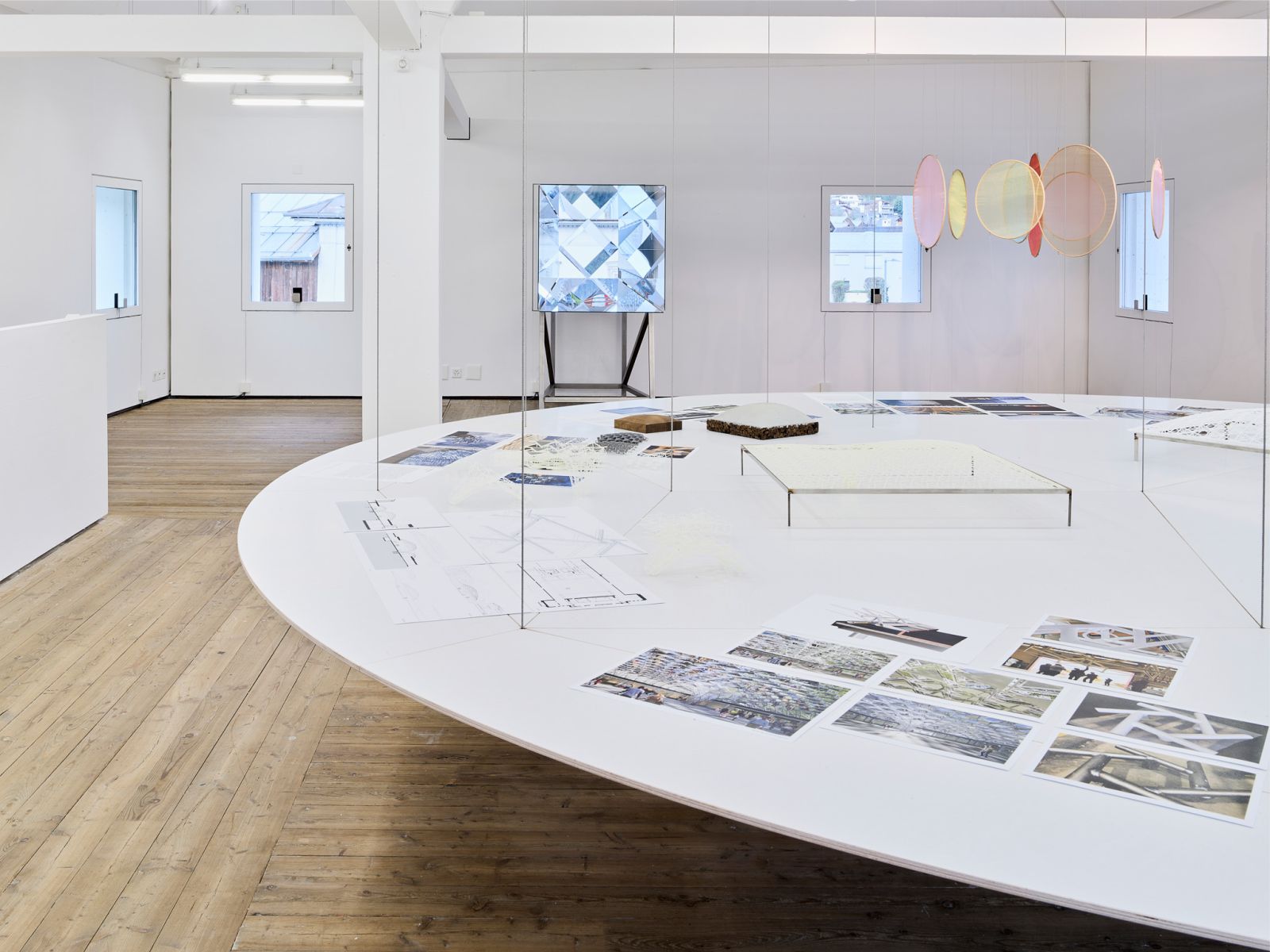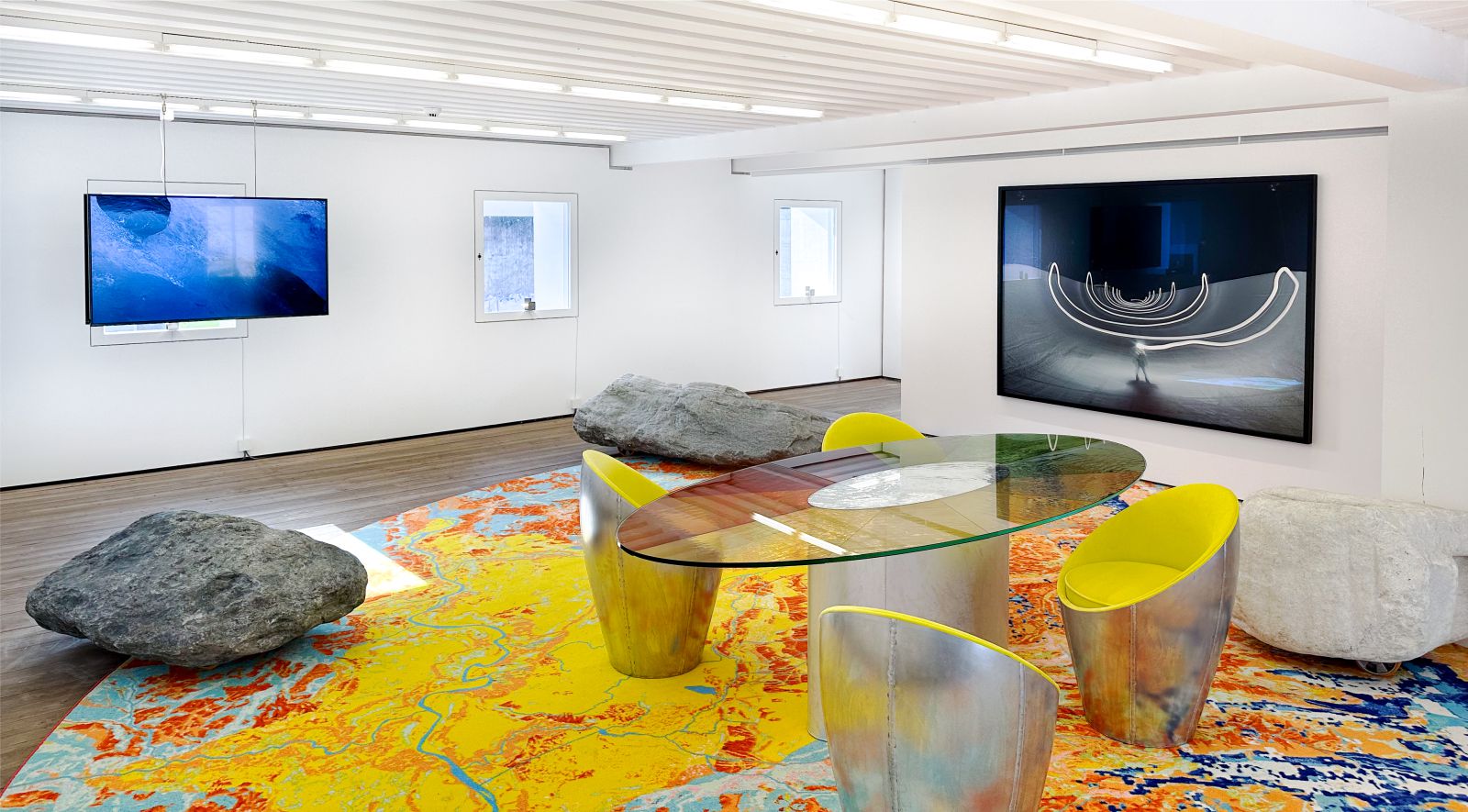Studio Other Spaces (SOS)—led by artist Olafur Eliasson and architect Sebastian Behmann—presents their third exhibition entitled ‘Räumliche Solidaritäten’ (Spatial solidarities) at Das Gelbe Haus Flims in Switzerland, sharing a selection of SOS’s projects alongside local initiatives from Flims and the surrounding area to creatively address agricultural, social and infrastructural issues.
‘Räumliche Solidaritäten’ (Spatial Solidarities) aims to create a space for dialogue. Through this format, Studio Other Spaces shed light on common misconceptions and dualities: mountain and valley, city and countryside, nature and culture are not contradictions, or rivals, but intricately interwoven and dependent on one another—together forming the fabric of the area.

The exhibition reflects SOS’s interwoven interests as an office for architecture and art: sharing novel design tools, traditional and cutting-edge building techniques, sustainable food systems, renewable energy, urban-rural cooperation, local knowledge, site-specificity, and consideration to ‘more-than-human’ perspective.
Through collaboration with regional partners, SOS strive to develop a meaningful relationship to the environments that they typically arrive at as ‘outsiders’. By highlighting regional entanglements and weaving connections between projects, SOS share a lively exchange with cities, research institutions, and independent makers.

The exhibition also displays points of contention in the region, to demonstrate that friction is part of any process of change in a community. Additionally, it includes places and entities that are not necessarily framed by any human project, but which nonetheless act as prominent characters in the landscape.
For instance, the enormous wall of the Zervreila dam, which has reshaped the ecosystems and acoustics of the area below; Icelandic moss and its idiosyncratic role in Rhaeto-Romanic folklore; and the ancient Flims landslide, upon which the region has been built.

Exhibition by floor
There are four themes, one for each of the floors, plus one for sites beyond the building: Timefulness, Project Ecologies, The Commons, and Spillage. The first level of the exhibition, situated on the ground floor, is based on the term ‘Timefulness’, which emphasizes lived human and nonhuman entanglements across timescales.
Placed together in this room are several works, including SOS’s custom circular carpet design Map of Shaping Forces (2023), displayed centrally on the floor. Produced by Ege Carpets from recycled plastic waste, within its single tufted surface are eight maps, each layer representing a distinct force that is shaping, or has shaped, the Flims region: hydrological networks, human-made structures, glacier extents, permafrost distribution, slope inclinations, soil flow-paths, forests, and historical rock avalanches.

Eight temporalities are collapsed into one shared reality as colours collide on a single textile plane, each inextricably linked to all the others. Scattered on and around the carpetare Rolling Stones, by Vogt Landscape Architects. Hanging nearby is the long-exposure photograph Light Pipe (2023), made by SOS in collaboration with photographer Gian Paul Lozza.
Also present is a selection of books that have served as resources for this project, with themes ranging from art, architecture, and climate to philosophy, geology, and food systems; the forms include compendia, bestiaries, and poetry. A table and chairs from SOS’s Lyst restaurant project within Fjordenhus in Denmark invite visitors to sit and take their time with the exhibition content.

On the top floor is the third level of the exhibition, themed ‘The Commons’. This space, which is closest to the sky, is dedicated to solidarities and the commons—that is, the natural-cultural resources accessible to all members of a society, including air, water, and a habitable planet. Suspended from the ceiling in the centre of the space is a large tabletop, upon which are laid photos, models, sketches, and studies of projects by SOS that, through design and spatial practices, give form to discourses around inclusivity and shared life worlds.
One such project is Common Sky (2019–23), a canopy of glass and mirrors designed to envelop the courtyard of the AKG Art Museum in Buffalo, New York. Nearby hangsa model of Condensation Pavilion, SOS’s proposal for a large-scale outdoor installation imagined for the Korean Demilitarized Zone (DMZ), which as a political ‘dead zone’ is currently teeming with feral more-than-humanlife. Merging with one window in the space is a kaleidoscope, Eye on Flims (2023), which renders the view of the outside through a fragmented, coloured lens.
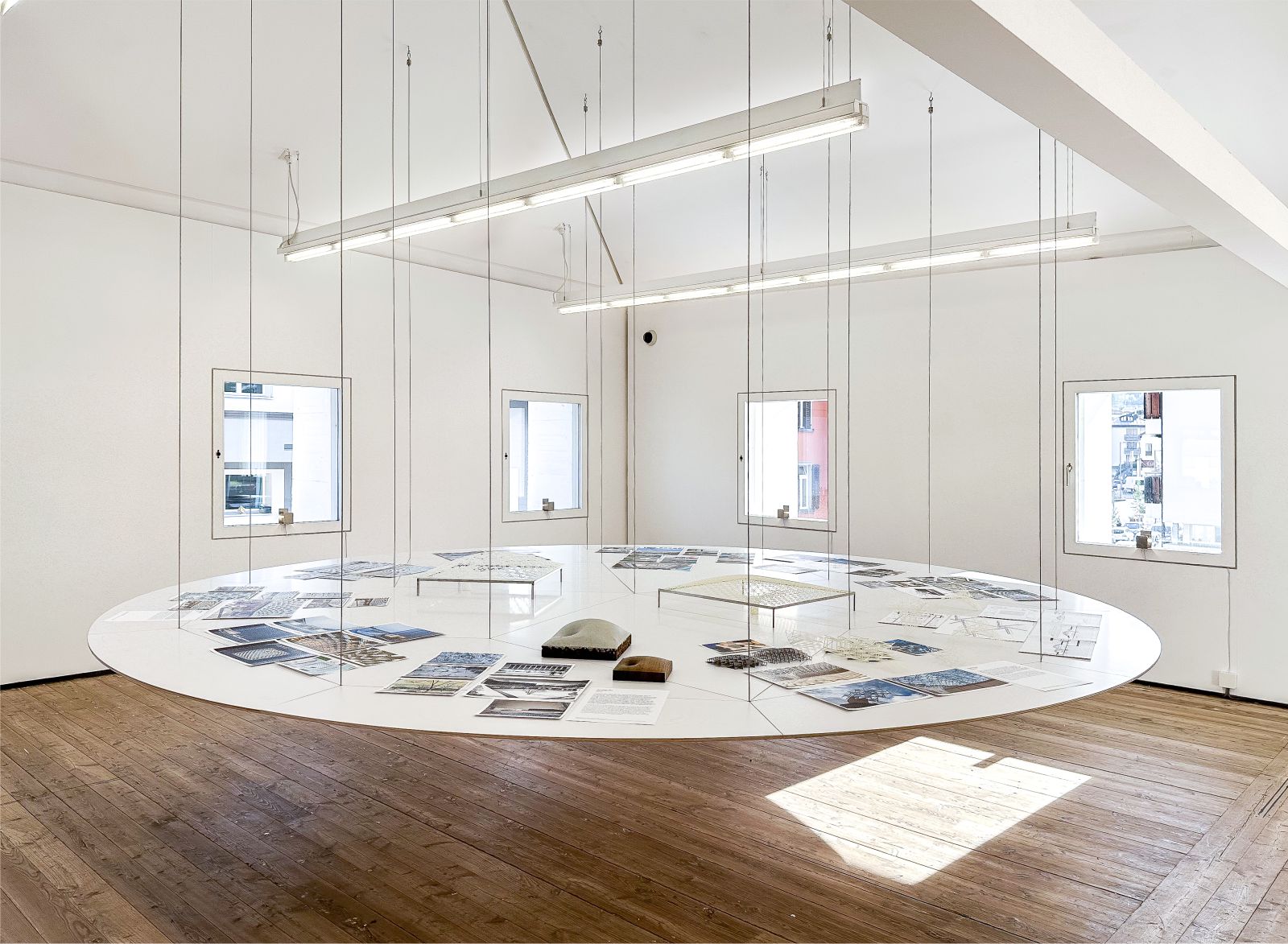
- Location: Das Gelbe Haus Flims, Switzerland
- Artist: Studio Other Spaces
- Co-curators: Damian Christinger and Elizabeth McTernan
- Date: 1 October – 27 Octorber 2023
- Photographs: Gaudenz Danuser, Courtesy of Studio Other Spaces
